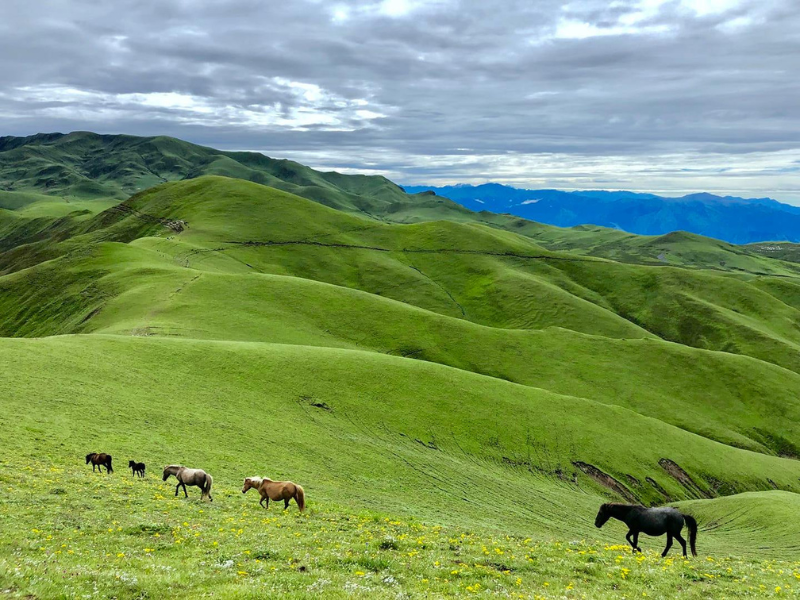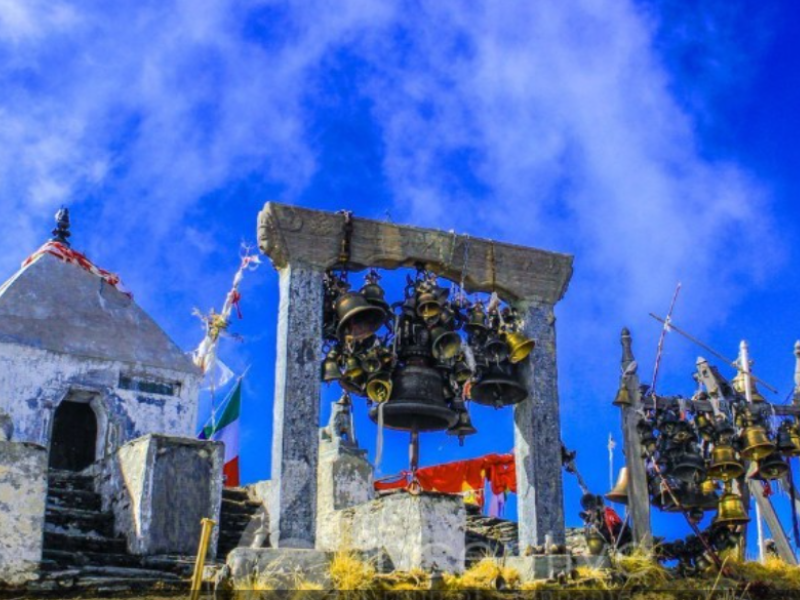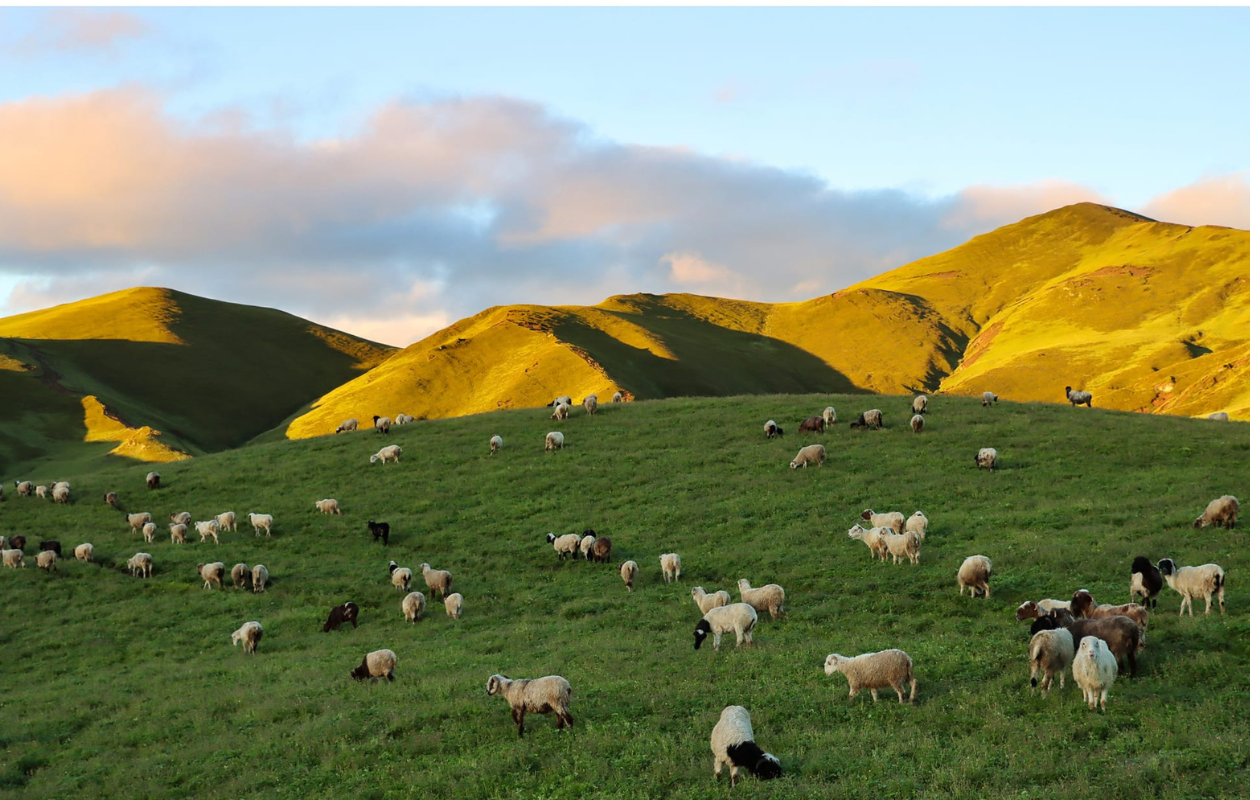Introduction
Located 830 km from Kathmandu, this isolated gem is one of the most in-demand treks in Nepal. Due to its majestic landscape and breathtaking views of the up-close mountains, this trek has grown in popularity in the past five years. A few years back, most people hadn’t heard “Badimalika.” However, due to the growing technology, many people have started putting the Badimalika trek on their bucket list.
Located in the Bajura district, Badimalika is a newly formed municipality. The name of this place has been derived from the famous Badimalika Mai temple. With just over 16,000 residents, this region is the least populated in Bajura. Located at 4200 meters, this temple is religiously significant and offers beautiful panoramic views of the surrounding mountains. Let’s look into this trek in a more detailed way.
Highlights of Badimalika Trek:
- Cultural Significance: Historic Amargadhi Fort at Dadeldhura, besides stunning nature, can be seen from this trek.
- Mountain Views: From this trek, Mount. Api and Saipal are clearly visible.
- Attractive landscapes: Lush green forests, waterfalls, streams, and the delightful Dhawalpur Lake can be witnessed.
- Religious Landscapes: Temples like Badimalika, Natyeshwori, and Silgadhi Temple can be visited on this trek.
- Challenging yet rewarding trails: The Badimalika trek is strenuous but worthwhile due to its beautiful landscapes and mountain views.
Essential Facts of Badimalika Trek:
- Trek Duration: 10 days
- Trek Difficulty: Challenging
- Location: Bajura, Sudurpaschim Province, Far West Nepal
- Accommodation: Tea Houses, Hotels
- Highest Elevation: 4200 meters

Detailed Itinerary for the Badimalika Trek:
- Day 1: Fly to Dhangadhi and Drive to Jhigrana: On your first day, you’ll fly from Kathmandu to Dhangadhi, an hour-and-a-half journey. You can enjoy the scenery and glimpse the mountain ranges along the flight. Once you reach Dhangadhi, you’ll drive to Jhigrana via Dadeldhura. The drive takes 8-9 hours and offers scenic countryside roads. You’ll stay the night in Jhigrana.
- Day 2: Trek from Jhingrana to Budha Kedar: You’ll start the trek from Jhinfrana to Budha Kedar early in the morning. This is a fairly easy part of the trek. You can easily reach Budha Kedar in approximately 6-7 hours. You’ll stay the night in Budha Kedar. During this part, you’ll ascend to 2860 meters.
- Day 3: On this day, you’ll ascend further from Budha Kedar to Nateshowri, crossing alpine meadows and ridges. Due to the high altitude and steep ascents, this is a challenging day. This trek takes around 6-7 hours, and you’ll start to feel the remoteness of this region. You’ll reach an altitude of 3800 meters on this day.
- Day 4: Trek to Nateshowri to Tribeni: On the third day, you’ll ascend further towards Tribeni, where the three rivers meet. This is considered a holy site in the Hindu religion, and many pilgrims gather here on special occasions. The trek to Tribeni takes roughly six hours from Nateshowri.
This is the mid-point for the Badimalika Trek.
- Day 5: Trek from Tribeni to Badimalika: This is the most challenging part of the trek, which will take you to an altitude of 4200 meters. Badimalika temple is dedicated to Goddess Bhagwati and offers a stunning view of Mount Api and Saipal.
- Day 6: Explore Badimalika and return to Tribeni. Early in the morning, start exploring the surroundings and return to Tribeni. You’ll descend using the same route, which will be much easier.
- Day 7: Return to Budha Kedar: You’ll retrace your steps from earlier in the trek. You will enjoy the downhill journey through stunning landscapes.
- Day 8: Trek From Budha Kedar to Jhingrana: Continue descending back to Jhingrana. This part of the trek is less strenuous, and you can appreciate the changing vegetation as you go lower in altitude.
- Day 9: Drive from Jhingrana to Dhangadhi: On the 9th day, take a long drive back to Dhangadhi. You’ll spend the night there.
- Day 10: Fly back to Kathmandu: On the 10th day, you’ll fly from Dhangadhi to Kathmandu, ending your unforgettable trek to Badimalika.

Tips for the Badimalika Trek:
- Physical Preparation: This is a 10-day trek involving 8 days of lengthy walking.
- Altitude Acclimatization: Though this trek doesn’t include elevation over 4500 meters, acclimatization is still necessary.
- Best Season: Summer and Autumn are perfect for this trek, as the weather around this time will be perfect and suits well for trekking.
- Health and Safety: Bring a first-aid kit with altitude sickness medication, bandages, and antiseptics.
- Packing Essentials: Bring good trekking boots, clothing, and trekking poles. Pack enough food and water supplies as tea houses and lodges are scarce.
- Plan for extra days: Be prepared for acclimatization, which may take 1-2 extra days due to the weather in this region.
Also Read: Beautiful Far-West: The Khaptad National Park Trek


0 Comment